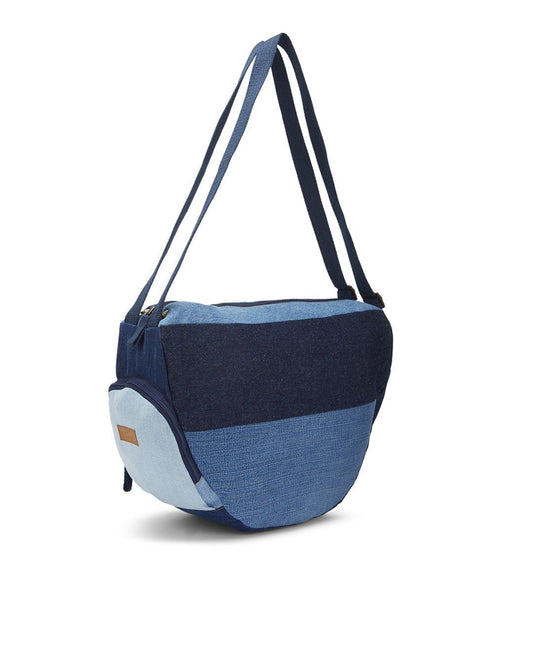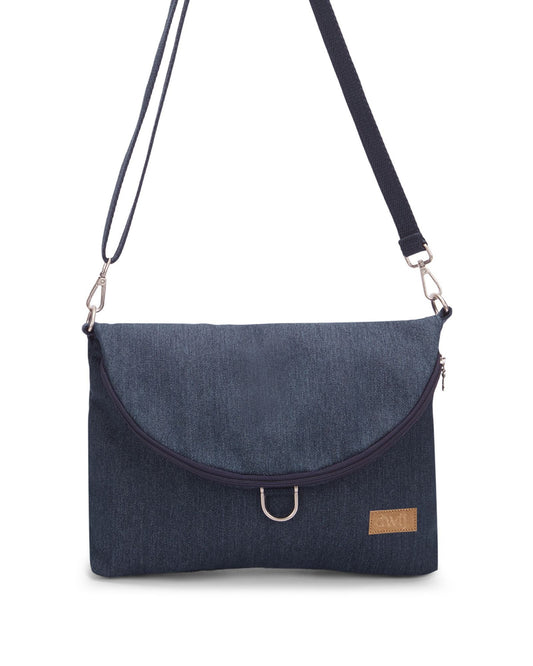Since dwij started up, we have often come across many people who shared with us serious, yet fundamentally misplaced perspectives related to clothing industry. We call them “misplaced perspectives” because a lot of it is based on misbeliefs or common knowledge that may not be the truth.
Based on the most common topics of conversations with our customers, here is a collection of Myth busters about various aspects in clothing and upcycling industry.

The last few years have seen significant development in the fashion industry, but it is also time to take note of the negative environmental and societal effects of this industry, which seems to be getting out of control.
Some of the biggest retail fashion names have launched take-back programs. Clothes collection bins have popped up in most of the developed Western countries, where consumers are encouraged to donate all unwanted products so that they can be given a “new purpose”, and in some cases by giving discounts on future purchases. Most often, the economics of recycling simply makes it cheaper to send those collected garments to developing countries all across the globe. That's because recycling clothes in the true sense into other textiles, particularly new clothes, is costly, difficult and tedious. As per Author and environmentalist Elizabeth Cline, it would take H&M more than a decade to recycle what it sells in a matter of days.
Once it is shipped to a different country, the most simple option is to dump it in landfills, which is very rampant in developing nations in Asia, Africa and South America. The useful garments are however sorted and sold in local second hand or street markets. Such developing countries that import the donated garments do so since there are no laws preventing textile dumping. Our responsibility thus goes a long way beyond simply donating our clothes.

It is commonly perceived that recycling is a simple process. However in reality, it is the opposite.
The complexity comes when manufacturing of clothes happens from blended fibers. Such blends are difficult to break down easily, since it needs to be first separated before they are recycled. And if heap of clothes with a mix of unknown blends are made to recycle, it down-cycles the quality of the end product. Commercially viable solutions for recycling are not easily available.
To give perspective, it may take an H&M a few decades to recycle the clothes that it sells in a few days. Thus, when most of the fashion brands carry out a collection drive under the banner ‘recycling’, they are in fact sent off to developing nations in Africa and Asia, which in turn creates another set of environmental and social problems for those countries.
Such perspectives, although ignored are very important when you make a guilt free purchase under clothes buy-back schemes.

Often, donation is a very effective method of guilt riddance. Whenever a typical upper or middle class family donates their clothes to their maids with a satisfied sense, most often these clothes end up with a chindi-wala.
In a typical chindibazaar, the first round of buyers are typically middlemen who pick up the best quality of the lot and re-sell the garments in nearby towns, small shops or on footpath. The next set of customers are typically the workers, laborers, truck drivers, and nearby slum dwellers, who get the garments for a slightly cheaper price since the best ones are already taken away. These chindi-walas also travel to various nearby towns and cities where the weekly chindi-markets are held. Often, the unusable and non wearable clothes are the clothes are downcycled into rags for cleaning purpose and are thrown away as garbage after one time use in industries, which ultimately finds its way into landfills.
Dwij tries to ensure that most of such non usable jeans too get a second life.

It may commonly be perceived that a new product is good for you. But any garment manufacturer would tell you that even a simple t-shirt goes through multiple hands (anywhere between 10-50) before it reaches you, not to mention tens of people who would have even worn it for trial purpose. We also often tend to ignore the future environmental impact of a new garment purchase, especially in terms of its supply chain or disposal. This is specifically applicable for synthetic garments.
Often, we come across customers who raise eyebrows when they get to know that our products are upcycled from second hand jeans. On the other hand, there are many customers who acknowledge that our products look just as new as a virgin material product. This is because high attention is given by us to hygiene and washing procedures. This is our utmost priority, to ensure that the customer views an upcycled product at par with a virgin material product.
A new garment purchase may be cheap for you to buy now, but has a future cost that the environment has to bear.

Transparency in fashion has been non-existent. The only tool to know the source where the garment was produced, is the “Made in XXX” label, which can also be deceiving. At times, 80% of a garment can be produced poorer country and then the balance 20% is finished in a more developed country, thereby enhancing the perception of the product using “Made in XXX” tag.
Further, majority of the brands do not have their own manufacturing setup. This results in products selling at a significant markup over the manufacturing cost due to high distribution and retailing margins. In addition, pricing competition ensures that labor cost remains cheap.
Other reasons such as quick turnaround time for manufacturing, poor forecasting, unfair penalties, and poor payment terms exacerbate risks for labor abuses in factories. Often, many brands negotiate with the manufacturers so hard that the manufacturers face powerful incentives to cut costs in ways that results in workplace abuses, which in-turn heighten brands’ exposure to human rights risks. Such brands on one side demand their suppliers maintain rights-respecting workplaces, but then incentivize them to do the opposite through hard negotiated contracts.
As per KnowTheChain, Adidas scored the highest at 92, however many luxury brands such as Prada scored a meagre 5. In reality, luxury brands are expensive not due to their superior labor policies, but due to their high marketing overheads instead. Such perspectives are often important while making a purchase.
Hope we were able to change your perspectives in some manner!






